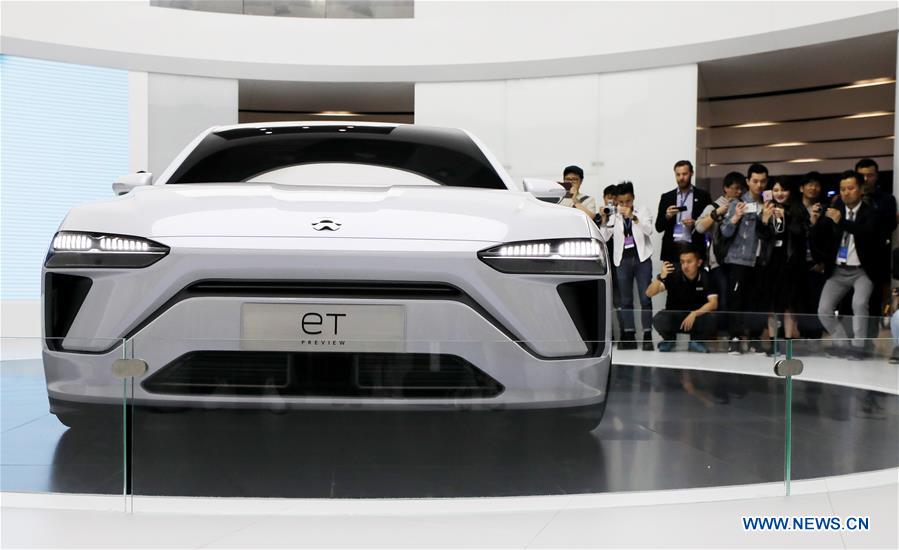World's largest auto market eyes NEV, AI for new growth
 0 Comment(s)
0 Comment(s) Print
Print E-mail Xinhua, April 19, 2019
E-mail Xinhua, April 19, 2019

Global carmakers are making the Auto Shanghai 2019 a launch pad for their new energy vehicles (NEV), as the world's largest automobile market pins hope on NEV and AI for impetus, following last year's contraction in car sales, the first in 28 years.
Over 1,000 auto industry producers from 20 countries and regions brought their new models and concept cars to the Auto Shanghai 2019, which opened Thursday.
Nearly all traditional automobile producers brought their new NEV models to the exhibition, ranging from fuel battery-powered, plug-in hybrids to pure electric cars. The competition is especially fierce in the battle for shares of China's 1.5 million electric car sales forecast for this year.
New energy boom
Nineteen new energy brands including GAC NE, WM-Motor and Grove made their debut at the auto show during the exhibition's media days on Tuesday and Wednesday. Most are Chinese carmakers.
Japan's Toyota Motor Corporation made a global debut of two electric car models at the exhibition, both expected to go on sale in 2020.
The company said in recent years, it has introduced several flagship Toyota sedans into the Chinese market. Toyota will promote electric vehicles as well as hybrid cars in China this year.
The company graced the auto show with its famous hydrogen-fuel-cell vehicle Mirai.
Chinese firm Grove Auto Co. Ltd. debuted its new series of hydrogen energy vehicles. One of them will enter mass production in 2020. The company has clinched a deal to build an R&D center in Shanghai for developing hydrogen-fuel technologies.
The boom of the NEV exhibits at the show reflected an increasing competition in the NEV sector in the world's largest auto market. Some 298,900 NEVs were sold in China in the first quarter of 2019, up 109.7 percent from the same period in 2018, according to the China Association of Automobile Manufacturers (CAAM).
BYD Chairman Wang Chuanfu said China's NEV manufacturing sector is heading for a prosperous period as the Chinese government's policy regulation of the auto industry seeks high-quality development.
The government has vowed to spend heavily on infrastructure construction such as building electric charging and hydrogenation stations.
Taking Shanghai as an example, up to now, the total number of charging piles in the city has reached 210,000, basically meeting the demand for the city's 240,000 electric cars on the road. The municipal government has planned to add 50,000 to 80,000 charging piles every year from 2019.
"NEVs are considered a new fashion in China. The government's support in building infrastructure also helps attract more NEV purchases," said Hao Yiguo, chairman of Grove Auto Co. Ltd.
Joachim Eberlein, managing director of Jebsen Motors, a Porsche dealer at the auto show, also noticed that Chinese customers are quite interested in NEVs, which is reflected in the high import numbers.
"We are actively preparing to introduce foreign electric vehicles with after-sales service," he said, adding the company is training skilled personnel to provide repair and maintenance services for foreign electric vehicles in China, while investing in the building of charging facilities.
Pricewaterhouse Coopers (PwC), the world's leading professional services provider, predicted that by 2030, the percentage of electric vehicles against all new cars would reach 50 percent in China, 44 percent in the EU and up to 20 percent in the United States.






Go to Forum >>0 Comment(s)